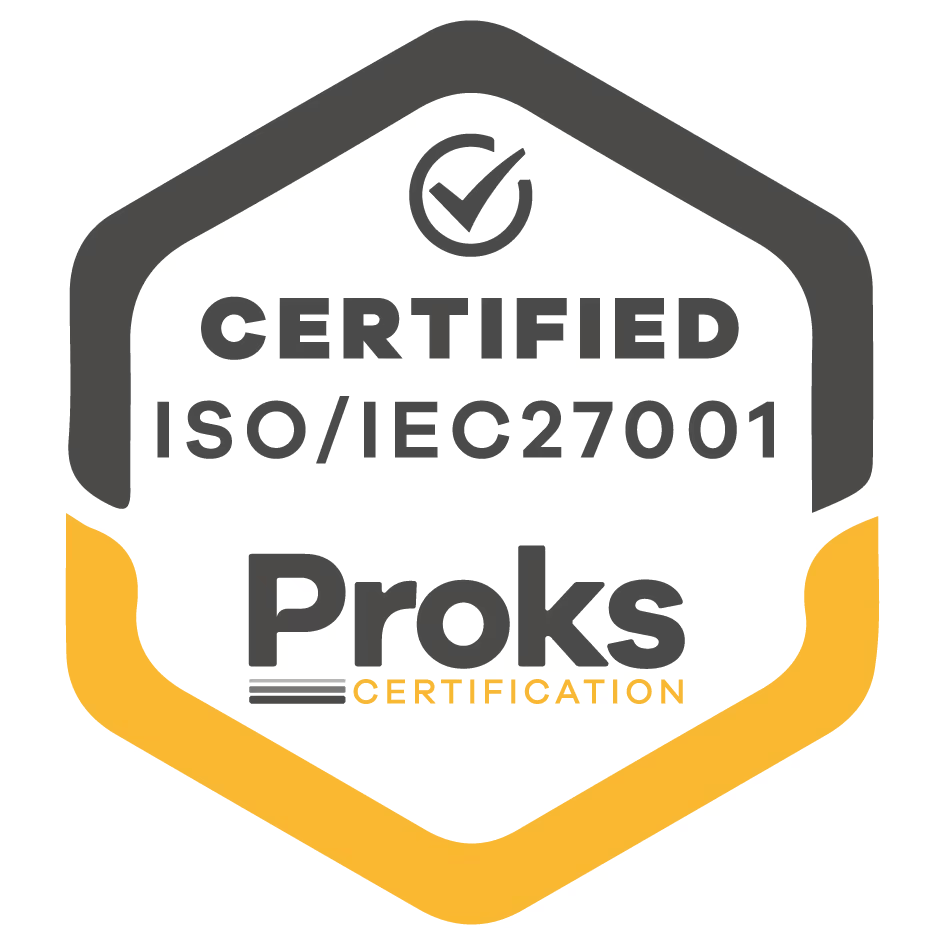

What is Robotic Process Automation (RPA)?
In a drive to boost efficiency, cut costs, and streamline operations, many companies are turning to digital technologies. One such technology is Robotic Process Automation. This solution is designed to automate repetitive, rule-based tasks that were previously done by human employees like data entry, form filling, data extraction, and more. With a promise to offload non-creative tasks and deliver faster results, RPA was hailed as the future of business automation.
However, as they say, nothing is 100% perfect. While RPA may have been the buzzword in recent years, it is not as innovative or advanced as some may believe. It's a simple rule-based tool that mimics human actions. It cannot learn or adapt on its own, unlike artificial intelligence. As a result, it has its limitations and challenges that can affect your business processes.
In this blog post, we'll take a deep dive into RPA to understand what it is, how it works, and its benefits. We'll also explore the limitations and challenges that come with RPA and discuss an alternative solution that goes beyond the hype and provides a more intelligent approach to business automation.
Understanding Robotic Process Automation: The Basics

Image credit: Freepik
Robotic Process Automation (or, in short, RPA) is a type of automation technology that uses software robots or bots to replicate the actions of a human worker in performing simple, repetitive, rule-based tasks. These tasks can include data entry, form filling, data extraction, report generation, process navigation, and other manual tasks that require little to no creativity. It's a simplistic solution that needs an unchanging environment and will repeat tasks that they have been instructed to do repeatedly (e.g., copy Excel cell A2 into Excel cell A4). In simple terms, RPA is nothing but programming a machine to do rigid and repetitive tasks that a human would normally do.
What Technology Does RPA Utilize?
RPA generally does not rely on advanced technologies like artificial intelligence (AI) or machine learning (ML) to perform its tasks. Instead, it follows a set of predefined rules and instructions to carry out its actions. RPA only performs tasks that it has been programmed to do; it cannot make decisions or think on its own. This makes it an ideal solution for automating repetitive tasks that are highly structured, rules-driven, and require little to no human intervention or any form of creativity.
How Does RPA Work?
The working mechanism of Robotic Process Automation (RPA) is quite simple. Here's a step-by-step guide to help you understand it better:

- Identify Monotonous Tasks: First, the business user identifies tasks that are repetitive, mundane, and tedious for human workers.
- Select RPA Tools: Based on the identified tasks, suitable RPA tools are selected that can easily automate these tasks without any human intervention.
- Develop Bots: Once the tools are selected, bots are developed and instructed to perform the identified tasks. These bots are programmed to follow specific rigid rules and instructions.
- Integration with Existing Systems: The RPA bots are then integrated into the existing systems and applications, where they can access and edit the necessary data and perform tasks as needed.
- Execute Tasks: Once fully integrated, the bots start performing their assigned tasks just like a human worker would, but at a much faster and more efficient pace.
Benefits of Robotic Process Automation (RPA)
RPA has been an efficiency booster for many organizations, providing numerous benefits that have helped them streamline operations and increase efficiency. Here are some of the key benefits of RPA:
- Increased Productivity: By automating repetitive tasks, RPA frees up time for employees to focus on more out-of-the-box tasks that require creativity and innovation.
- Reduce Error Rates: RPAs don't just speed up the process; they also reduce the chances of human error, leading to more accurate and reliable results.
- Cost Savings: With RPA, businesses can cut costs by reducing the need for human workers to perform mundane tasks. This results in reduced labor costs and increased efficiency.
Beyond the Hype: The Realities and Limitations of RPA

Image credit: Freepik
Many businesses often view RPA as a silver bullet, a one-size-fits-all solution for all their automation needs. However, in reality, RPA is not without its limitations and challenges; it is not the be-all and end-all of business automation. Below, we have listed some of the major limitations and challenges that come with RPA:
1. Inability to Handle Unstructured Data
One of the biggest limitations of RPA is that it cannot handle unstructured data. While it excels in dealing with structured, rule-based tasks, it falters when it comes to unstructured data such as emails or contractual documents. So, what it means:
- Manual adjustments are needed for every specific document layout.
- Time-eating and tedious tasks, especially if dealing with various document formats.
- Potential for errors and inaccuracies.
2. Lack of Cognitive Capabilities
RPA is a stupid rule-follower. It does exactly what you tell it to do and nothing more. Unlike other self-learning AI technologies, like LLMs, RPA does not have the ability to learn and improve over time. It is limited to the set of rules and instructions it has been given, which limits its applicability to more simple, repetitive tasks. For instance, you can assign your RPA to extract certain fields from a document (e.g. customer address or price), but it won't be able to understand the context and check for any errors. It does not even understand what field it is extracting, e.g. if the layout of the document changes and the customer address field would be replaced by the customer’s banking information, RPA would not be able to tell the difference. It would just blindly copy the banking info, thinking it is the customer's address. It cannot make decisions on its own or adapt to changing circumstances. Essentially, RPA is only suitable for extremely rigid, non-changing environments.
3. Challenges in Scaling Up
While RPA technology may promise scalability, in reality, some tools may face hurdles when it comes to scaling, especially when dealing with outdated legacy systems. RPA bots are quite easy to implement, but they can be difficult to manage and govern, making it challenging for businesses to scale their automation initiatives. Additionally, as businesses grow and evolve, they may face complications due to internal changes or regulatory updates, further impeding the scalability of RPA. Setting up an RPA system is just the first step; maintaining and scaling it is an ongoing challenge that businesses need to consider. Every little change in your workflows means re-programming RPA functions.
{{cta="/cta/automate-your-sales-order-workflow-with-ai-agents"}}
The Rise of AI Agents: A More Intelligent, More Better Solution

Image credit: Created with Bing
Robotic Process Automation (RPA) software tools are like a double-edged sword. While they excel at handling structured data and repetitive tasks, they often fall short when it comes to dealing with the more nuanced and dynamic aspects of work. But it doesn't mean that businesses should give up on the automation of complex tasks altogether. In fact, there's a better solution that combines the best of both worlds: AI agents.
AI agents, such as turian, are intelligent process automation tools that use large language models (LLMs), natural language processing (NLP), and machine learning (ML) algorithms to mimic human-like thinking and decision-making. Here's why AI agents like turian are a smarter, more efficient solution for businesses:
1. More Intelligent and Flexible
Unlike traditional RPA tools that follow a set of predetermined rules and can't handle unstructured data well, AI agents are designed to “think” and understand context. They can handle any data type, whether structured, semi-structured, or unstructured, and any format like PDF, Excel, Word, and even images. AI agents can also understand the context of the data and make decisions based on it, just like a human employee would. This reduces the need for manual adjustments and makes them more flexible.
2. Constantly Learning and Improving
An AI agent is like a perpetual student—always learning, growing, and adapting. Unlike RPA tools, which operate within fixed parameters and require manual updates, AI agents evolve through continuous learning. They analyze data, recognize patterns, and adjust their behavior based on new information. This ability to learn from past experiences (e.g., feedback) allows AI agents to improve their performance over time and make more accurate decisions. The more they work, the better they get, and the better they get, the more value they bring to your business.
3. Cost-Effective and Scalable
AI agents not only adjust to the context of the data they receive, but they can also scale with your business. They can seamlessly integrate with your current ERP/CRM systems ( like SAP, MS Dynamics 365, Oracle, NetSuite, Epicor, etc., and work with popular email clients ( Gmail and Outlook) without any additional setup or configuration. This intelligent automation solution can help SMEs stay competitive and grow without breaking the bank.
Plus, if there is a sudden spike in workload or change in the type of tasks, AI agents can efficiently adapt and scale accordingly without any downtime.
Conquering RPA Limitations: How turian Streamline Workflows
Our AI-backed assistant, turian, is designed to conquer the limitations of traditional RPA by offering a more intelligent, scalable, and secure solution for automating business processes. turian uses the most powerful Large Language Models to understand and process natural language inputs in a way that mimics human intelligence. It can handle complex and dynamic workflows without any manual adjustments, make accurate decisions based on context, and learn from past experiences to continuously improve performance. Our AI-powered assistant also responds to emails, creates reports, and performs various other complex tasks that traditional RPA solutions struggle with. Unlike RPA solutions that break when processes change, turian adapts, learns, and continuously improves.
Turian also comes with a user-friendly interface that allows you to monitor and manage your automation processes seamlessly. It can be seamlessly integrated with your existing ERP/CRM systems and email clients (e.g., Outlook, Gmail) and can be customized to fit your unique business needs. But turian is more than just a powerful software to automate processes; it also prioritizes security and compliance to ensure your data is always protected.
However, we know that LLMs are not a magic solution, and that is why we have incorporated a human-in-the-loop approach to ensure accuracy and quality in every task. This means that our software automatically routes tasks to humans when it encounters uncertainties or errors, allowing for a reliable completion of processes. turian gives you a real-time overview of all your automation processes, ensuring complete transparency and control.
{{cta="/cta/turn-your-inbox-into-a-supply-chain-cockpit"}}
Whether you're dealing with sales order entry, compliance management, data entry, or other non-creative, repetitive tasks, turian is the ideal solution to streamline your workflows and boost productivity. If you want to see how our AI assistant can optimize your business processes, we offer a free POC (proof of concept) to evaluate its performance and capabilities. So why settle for limited, rule-based RPA solutions when you can experience the power of AI with turian? Contact us today to learn more!






